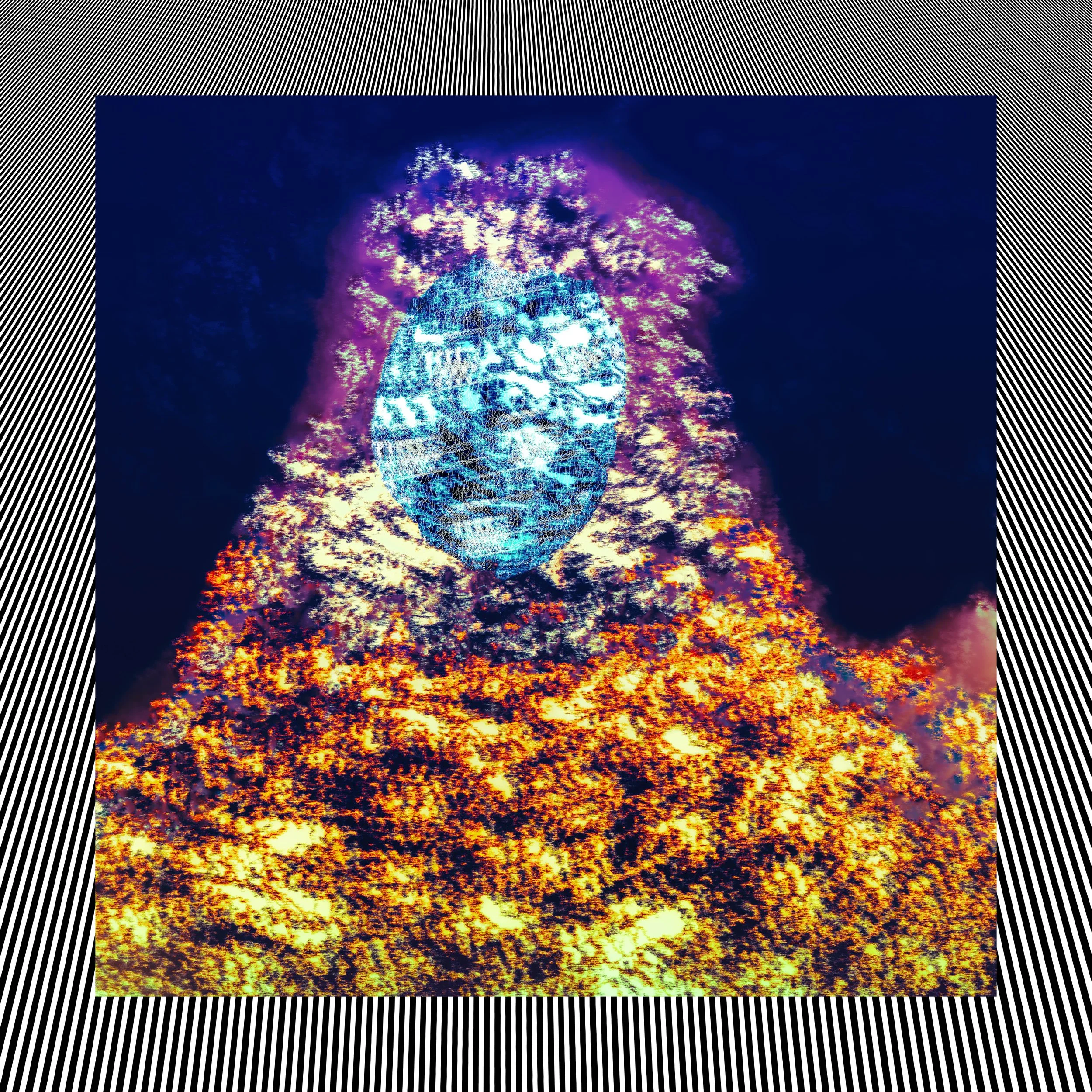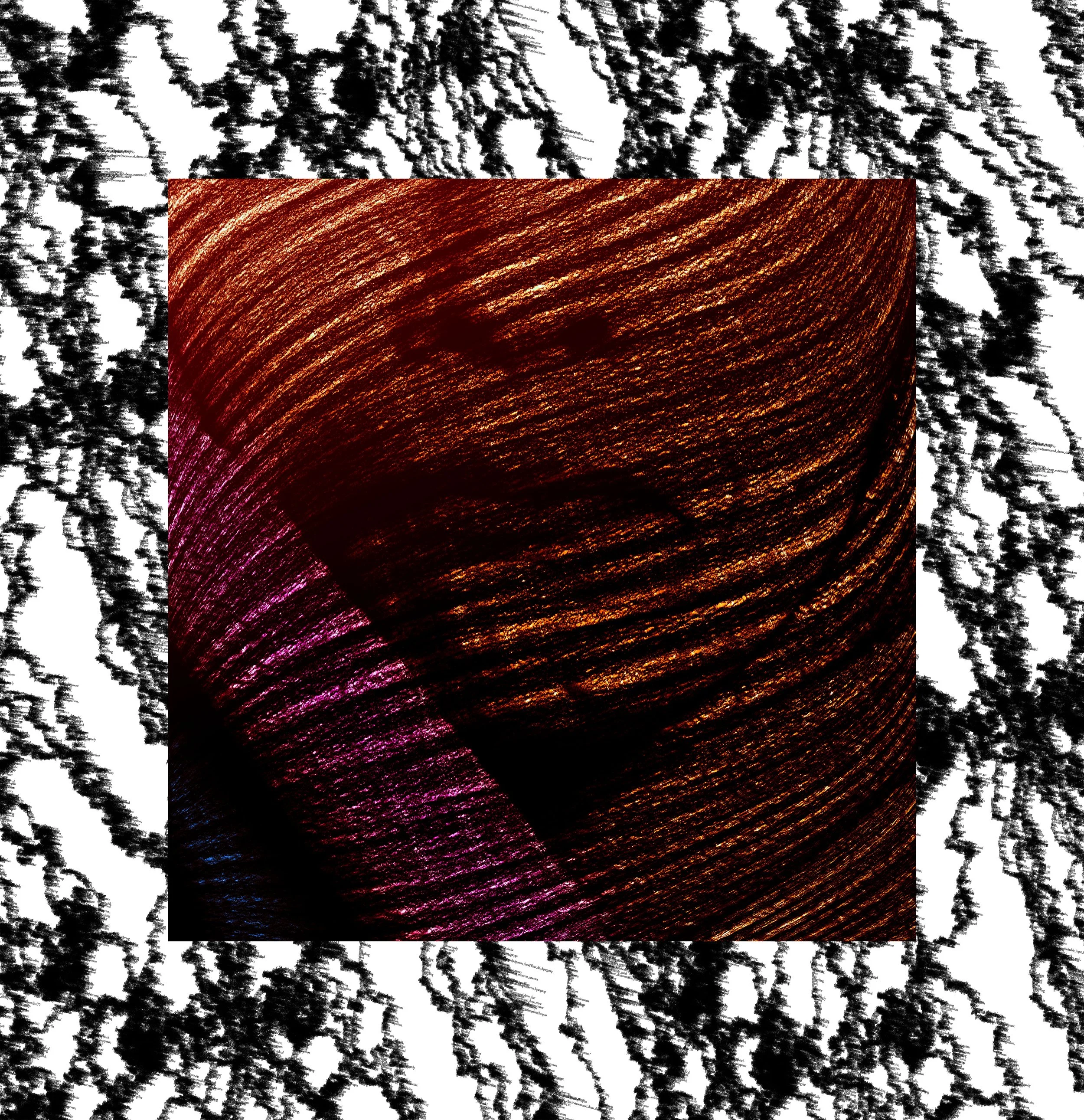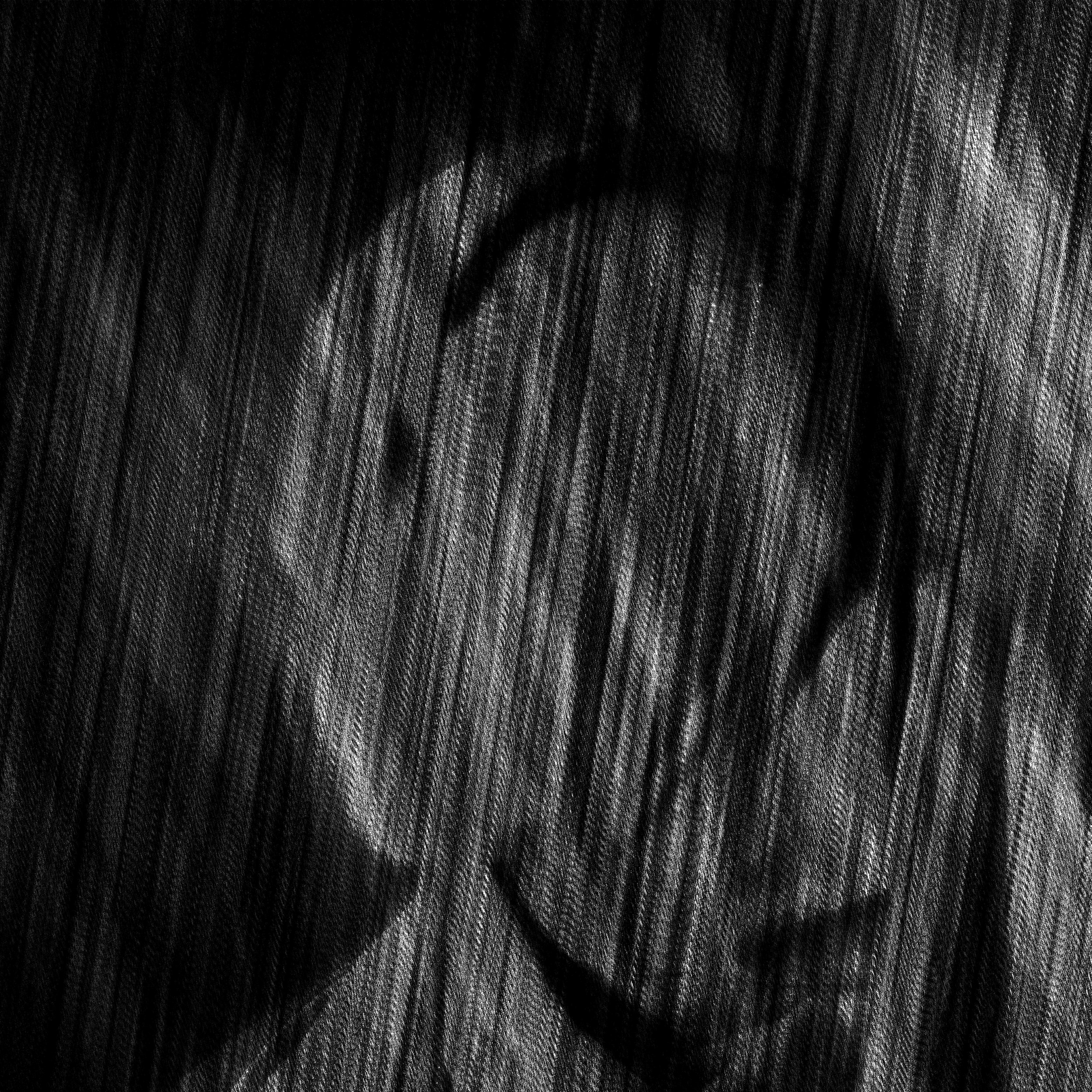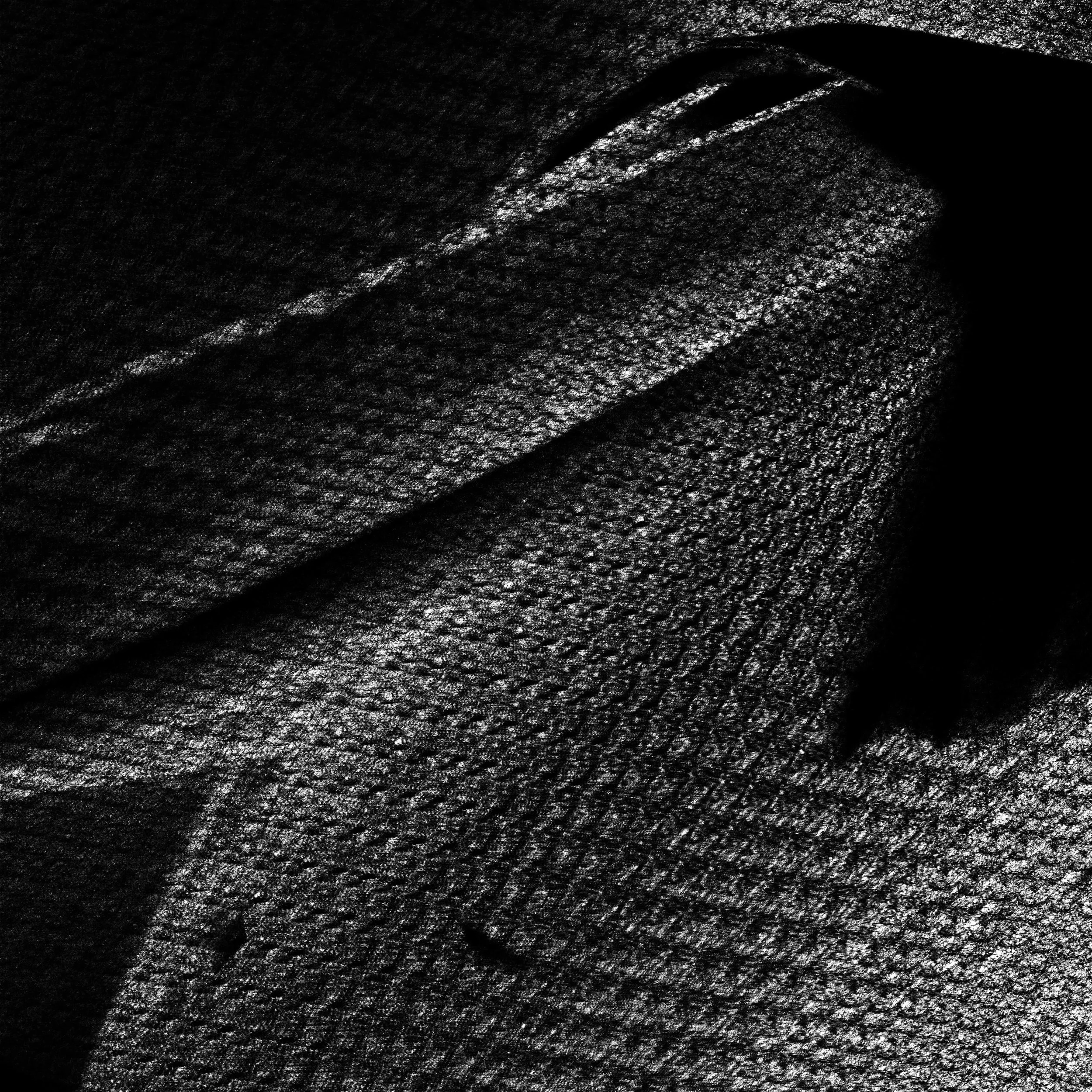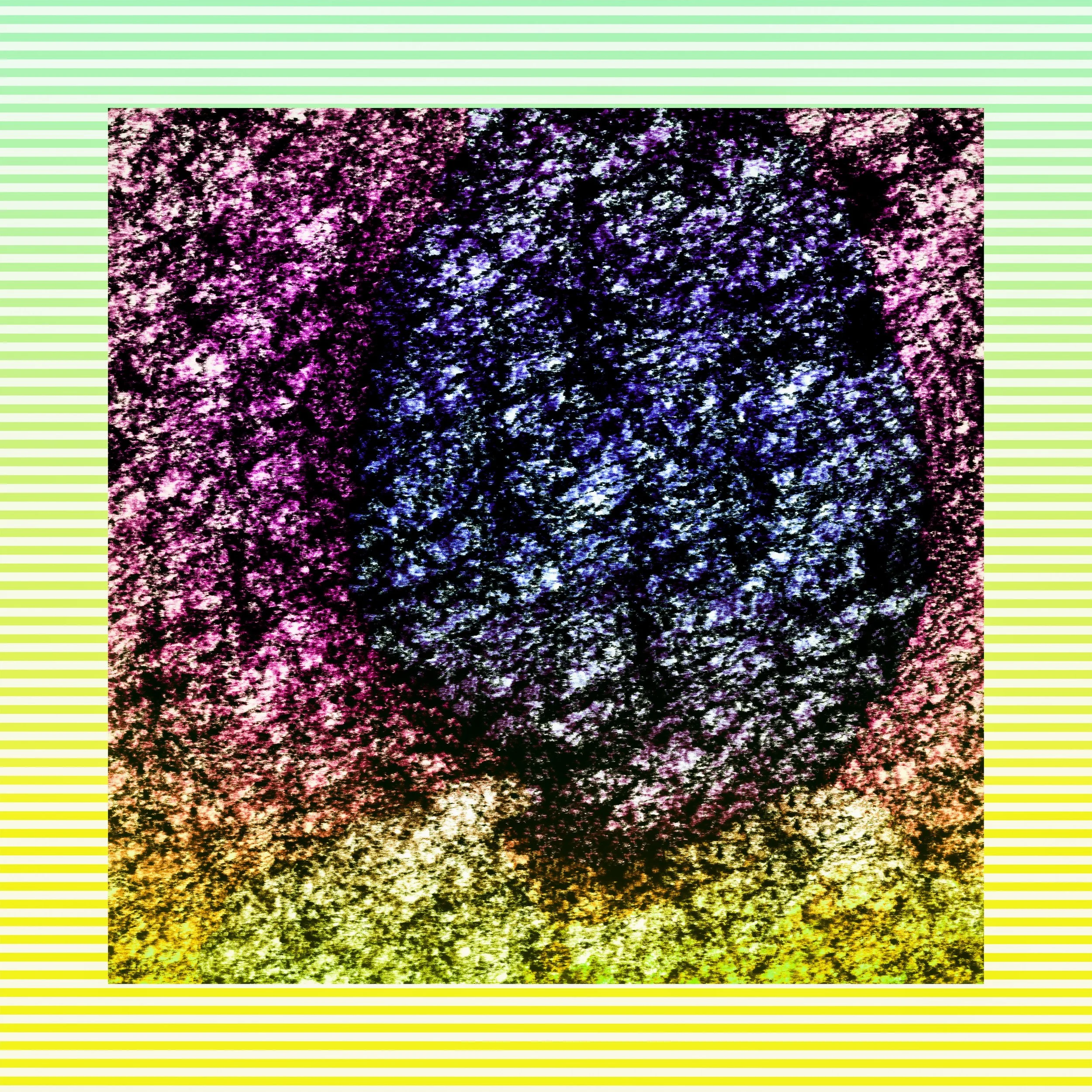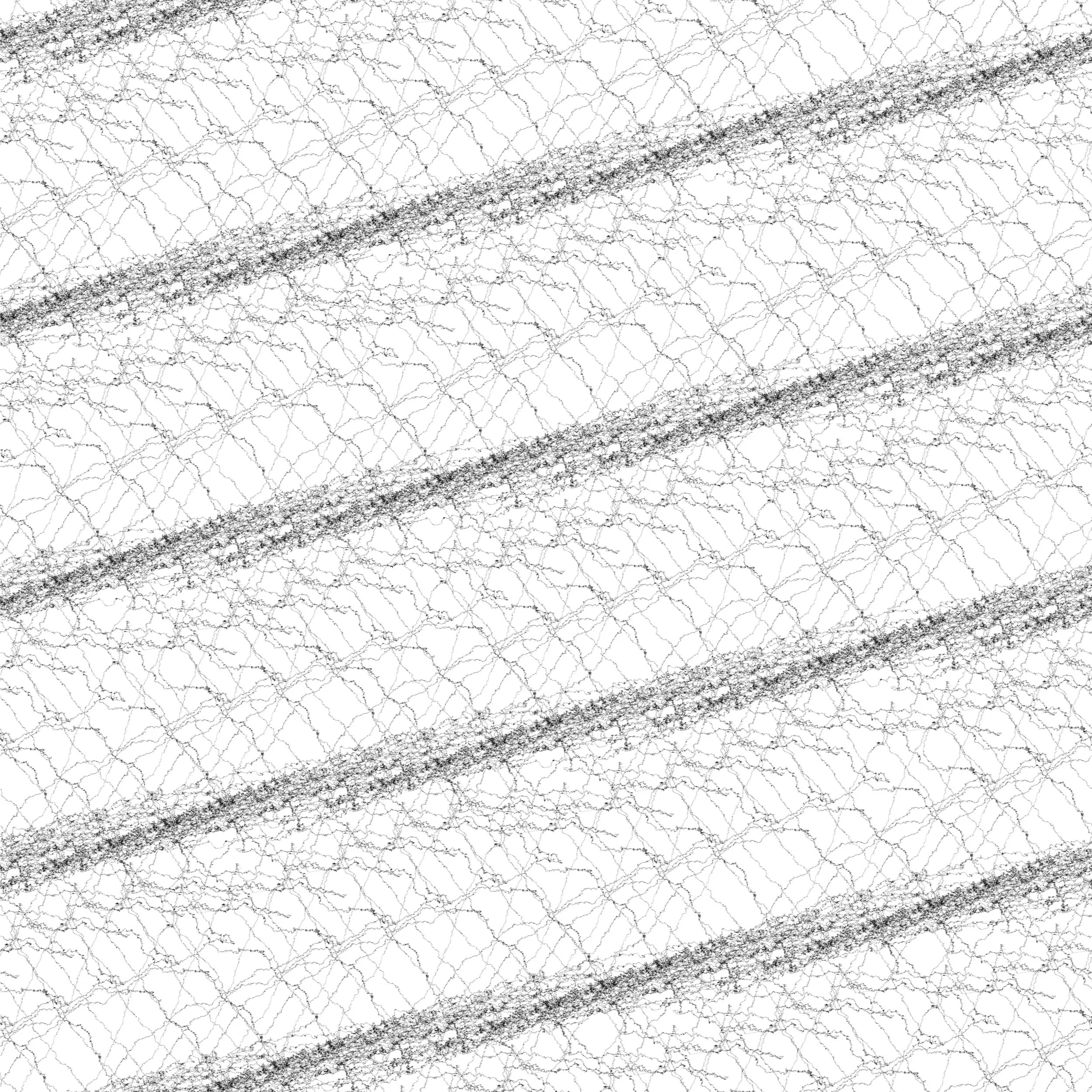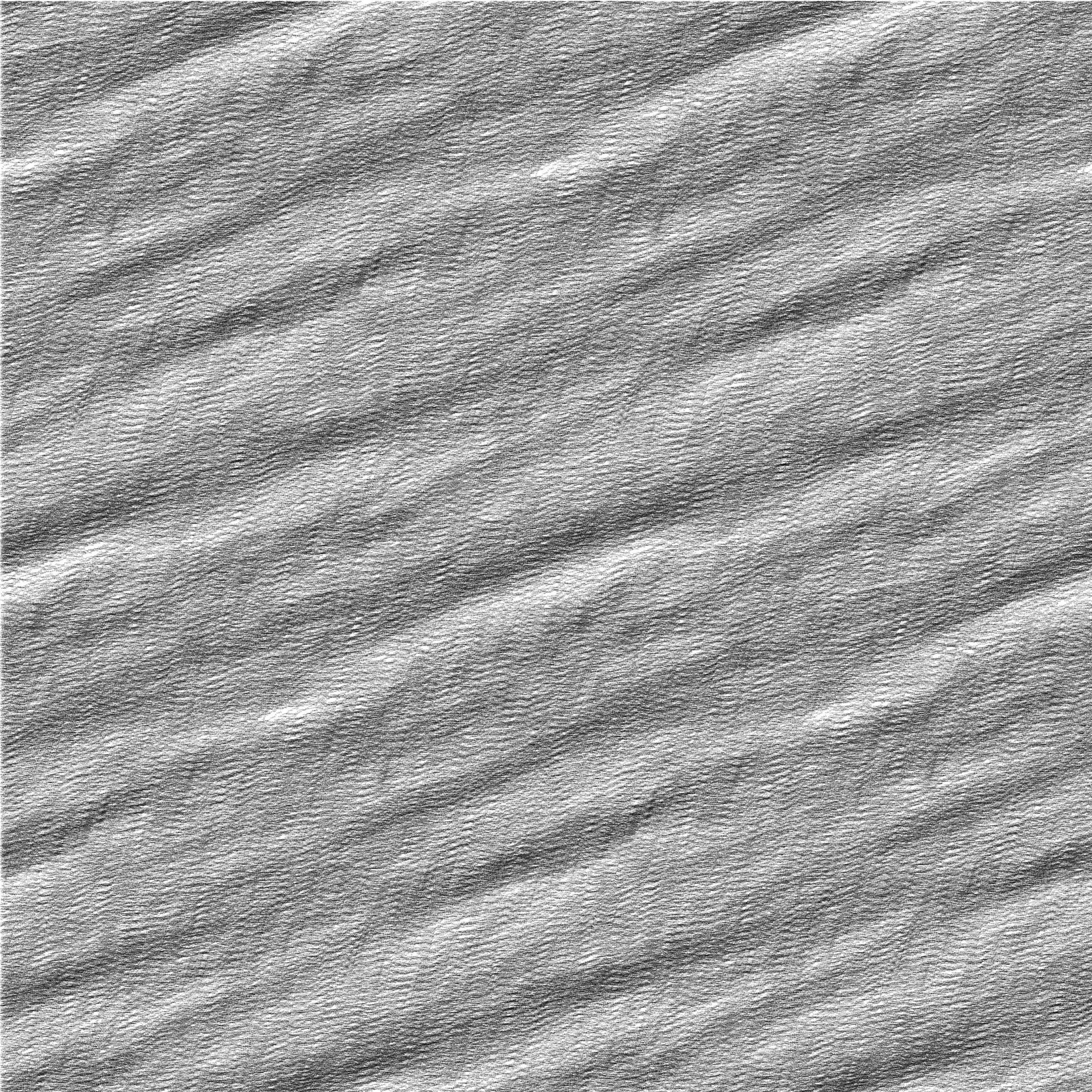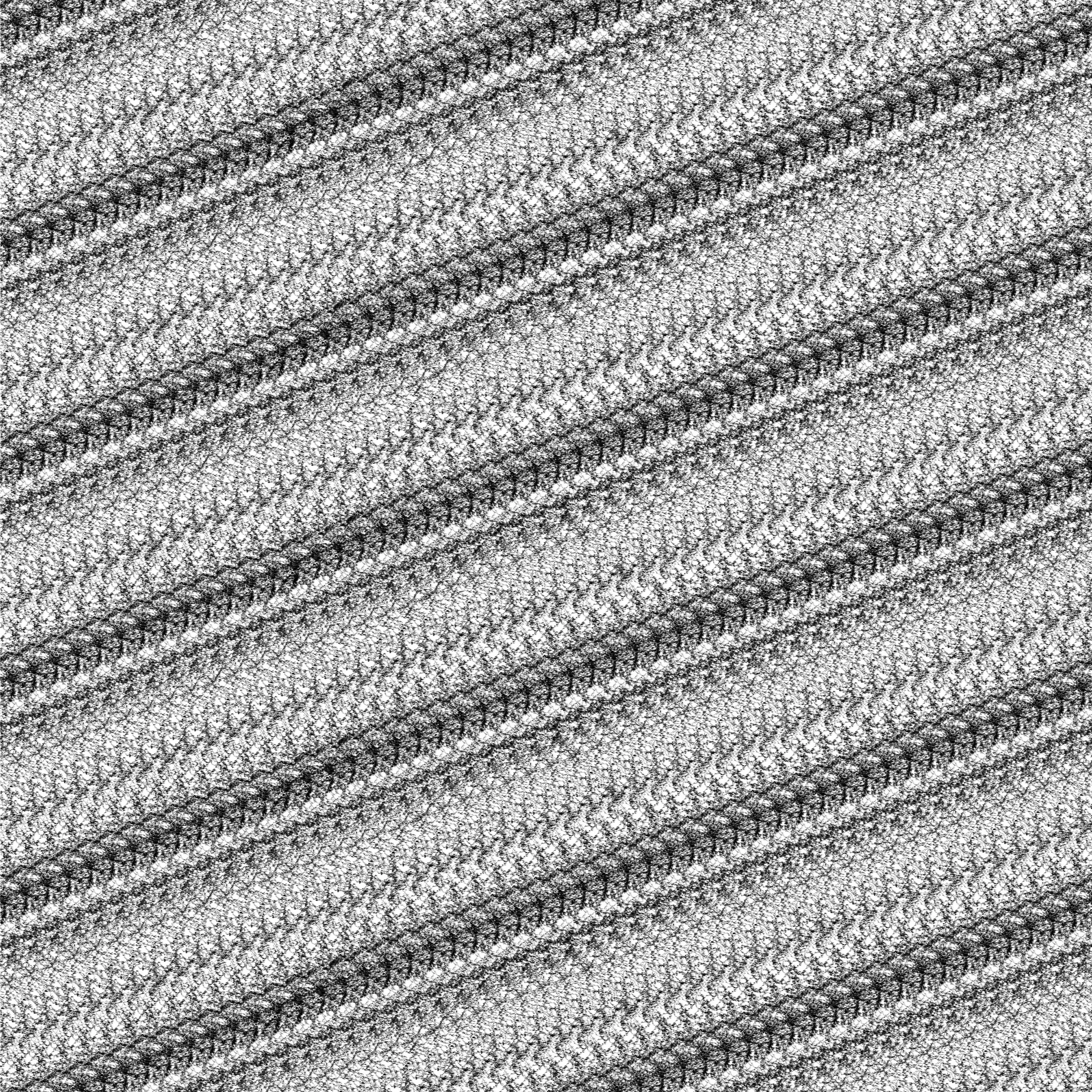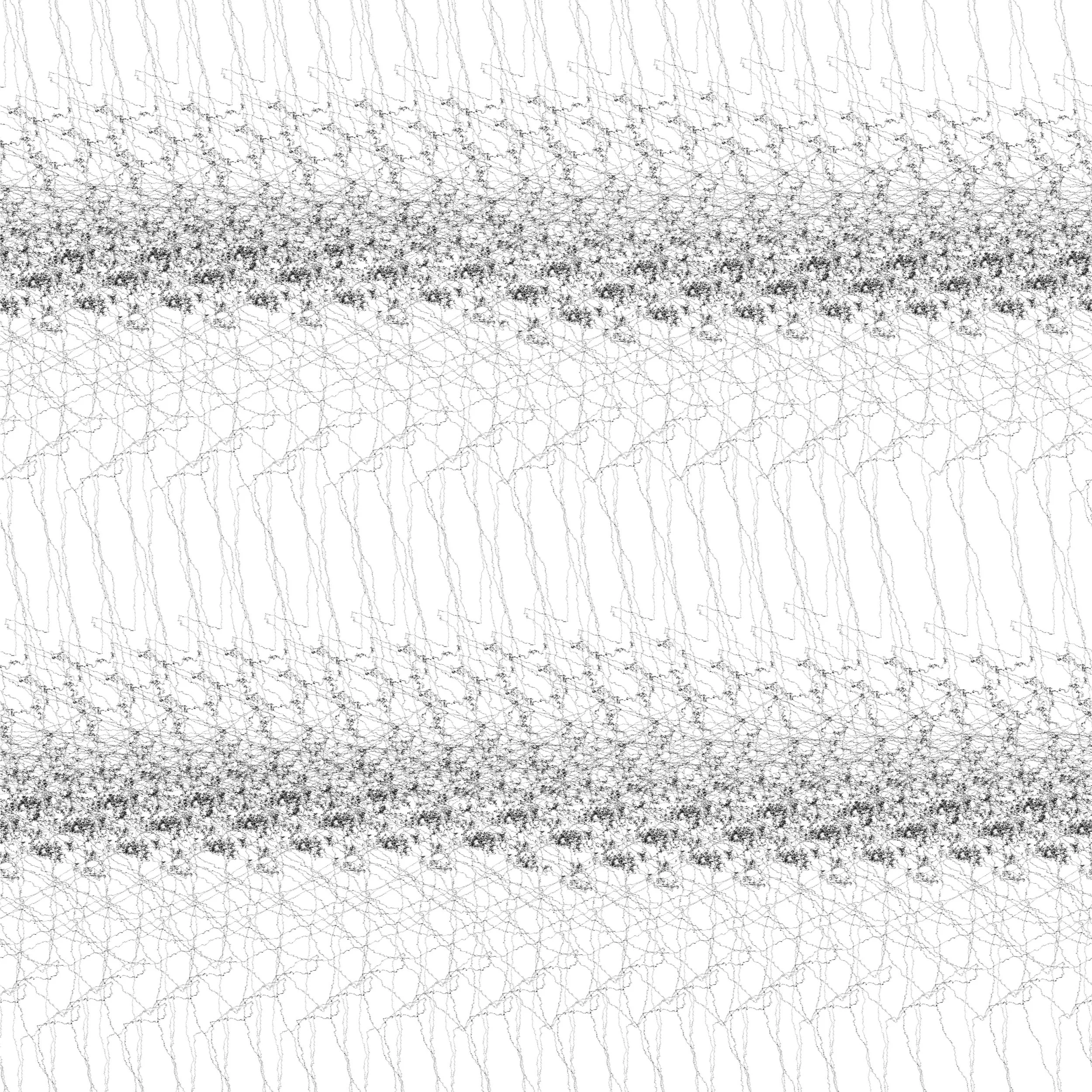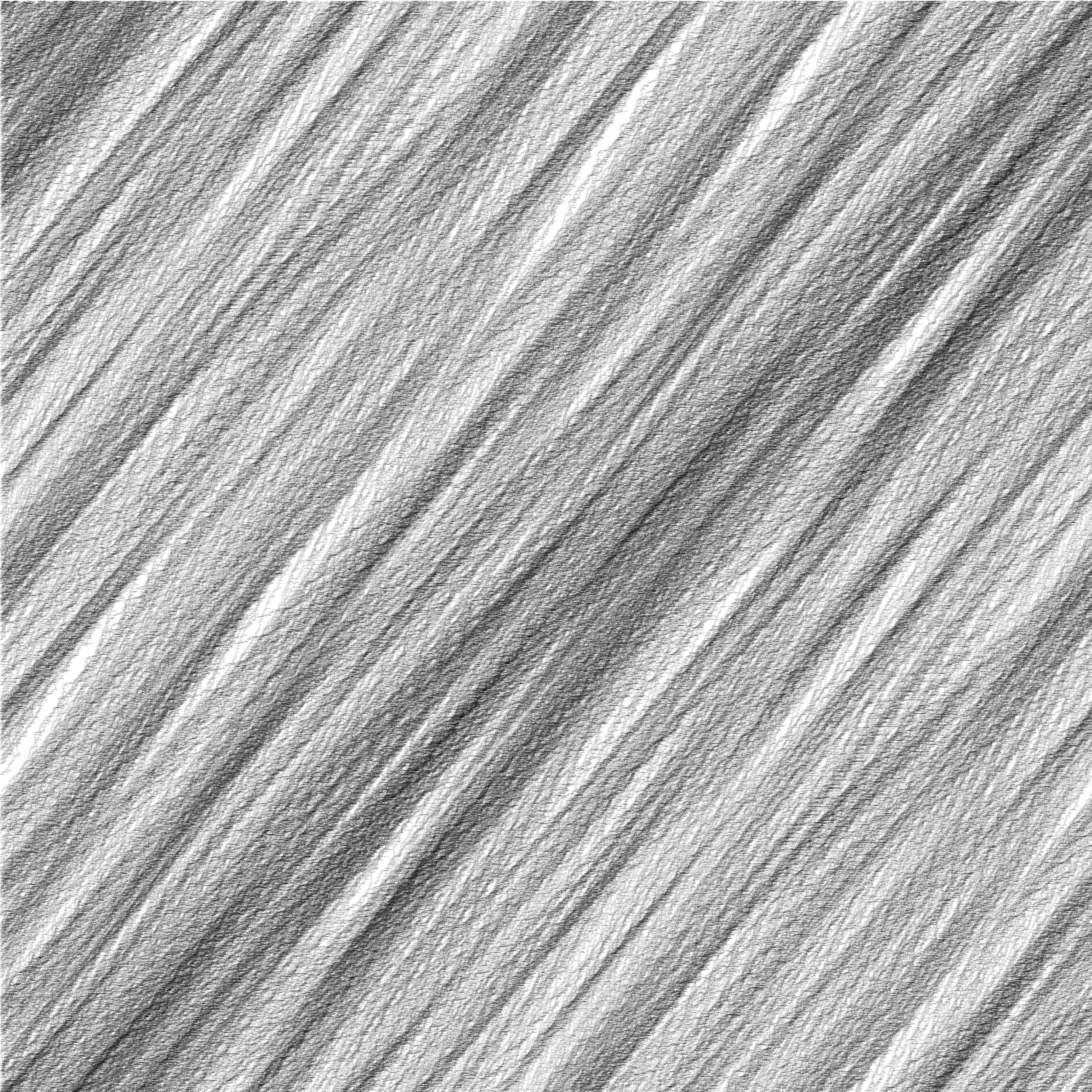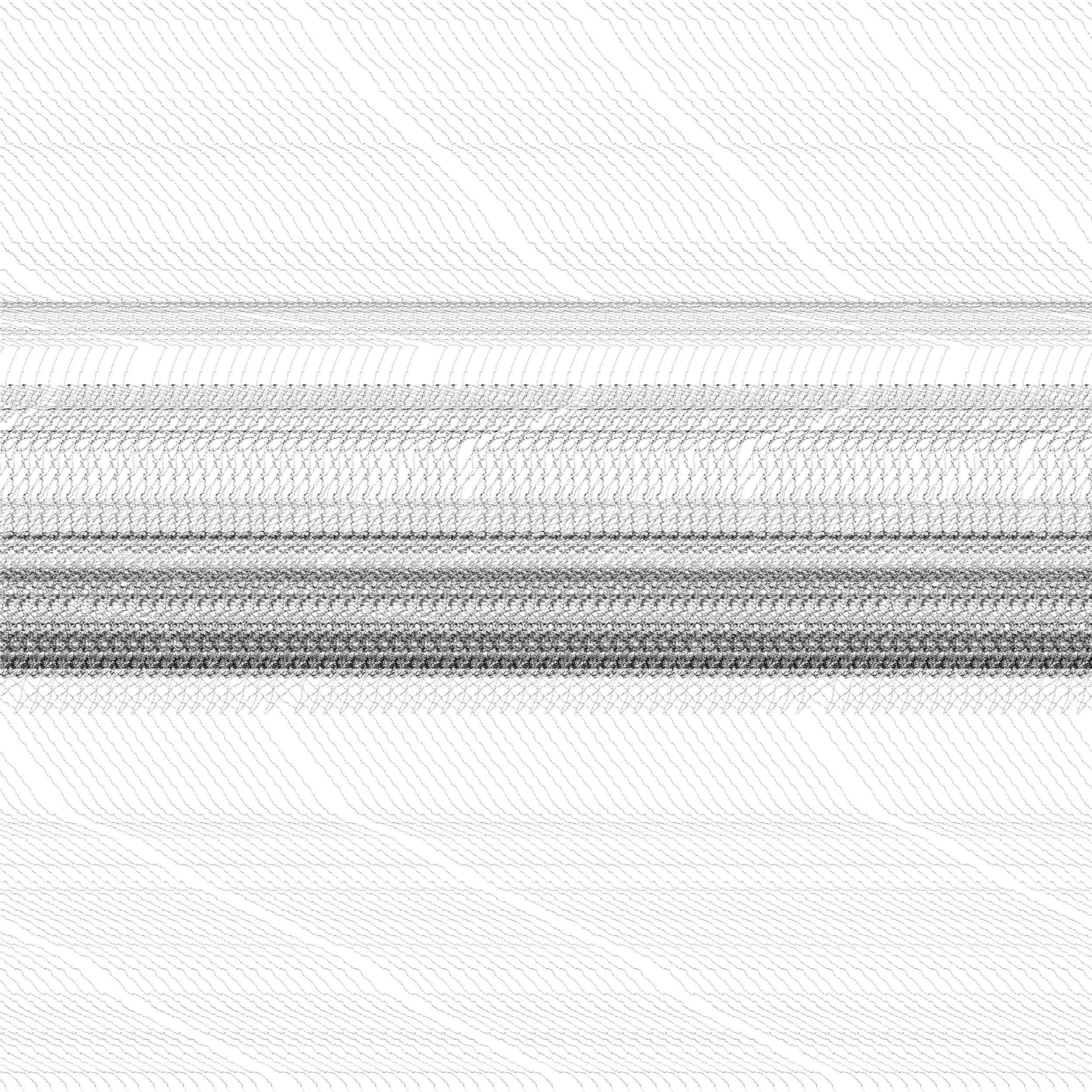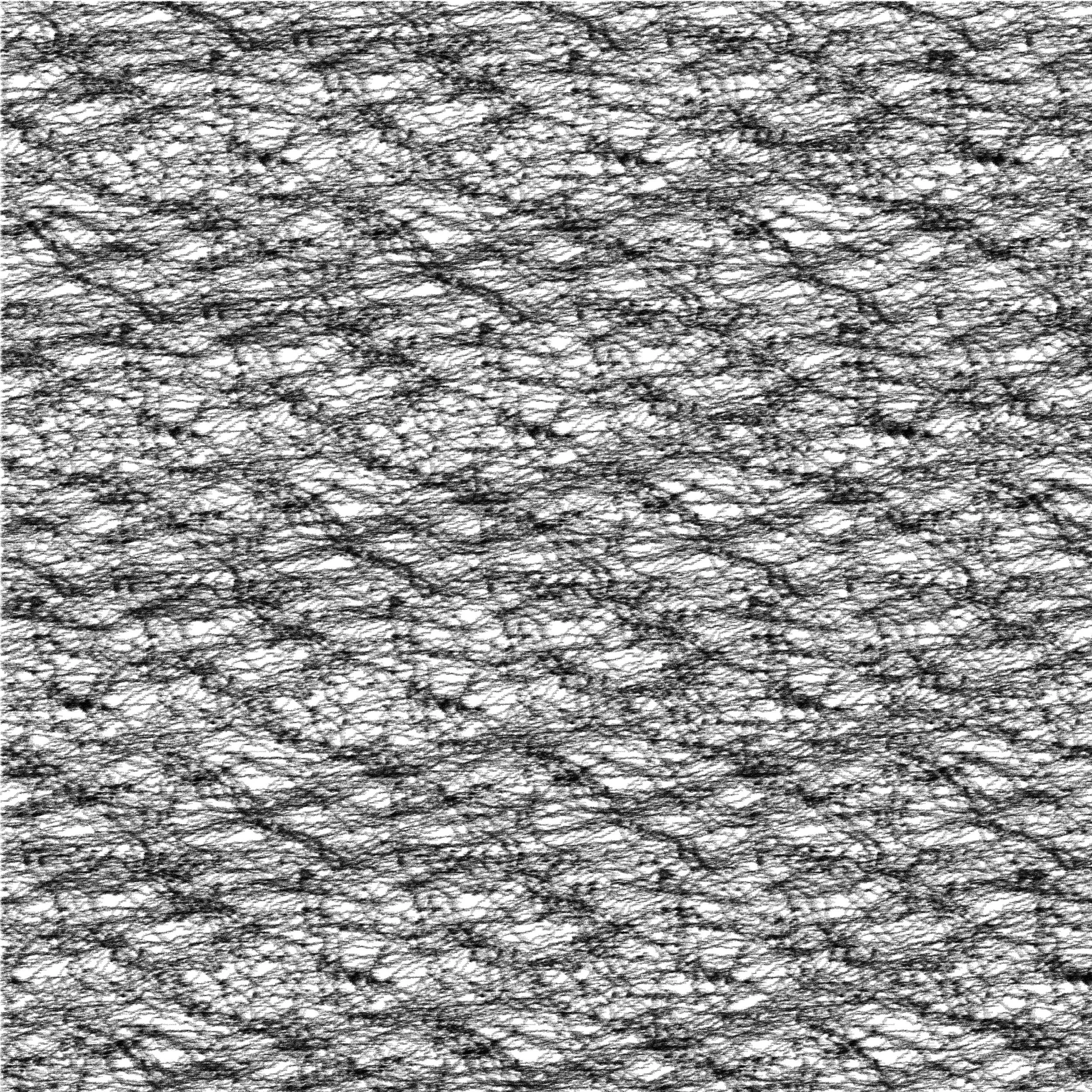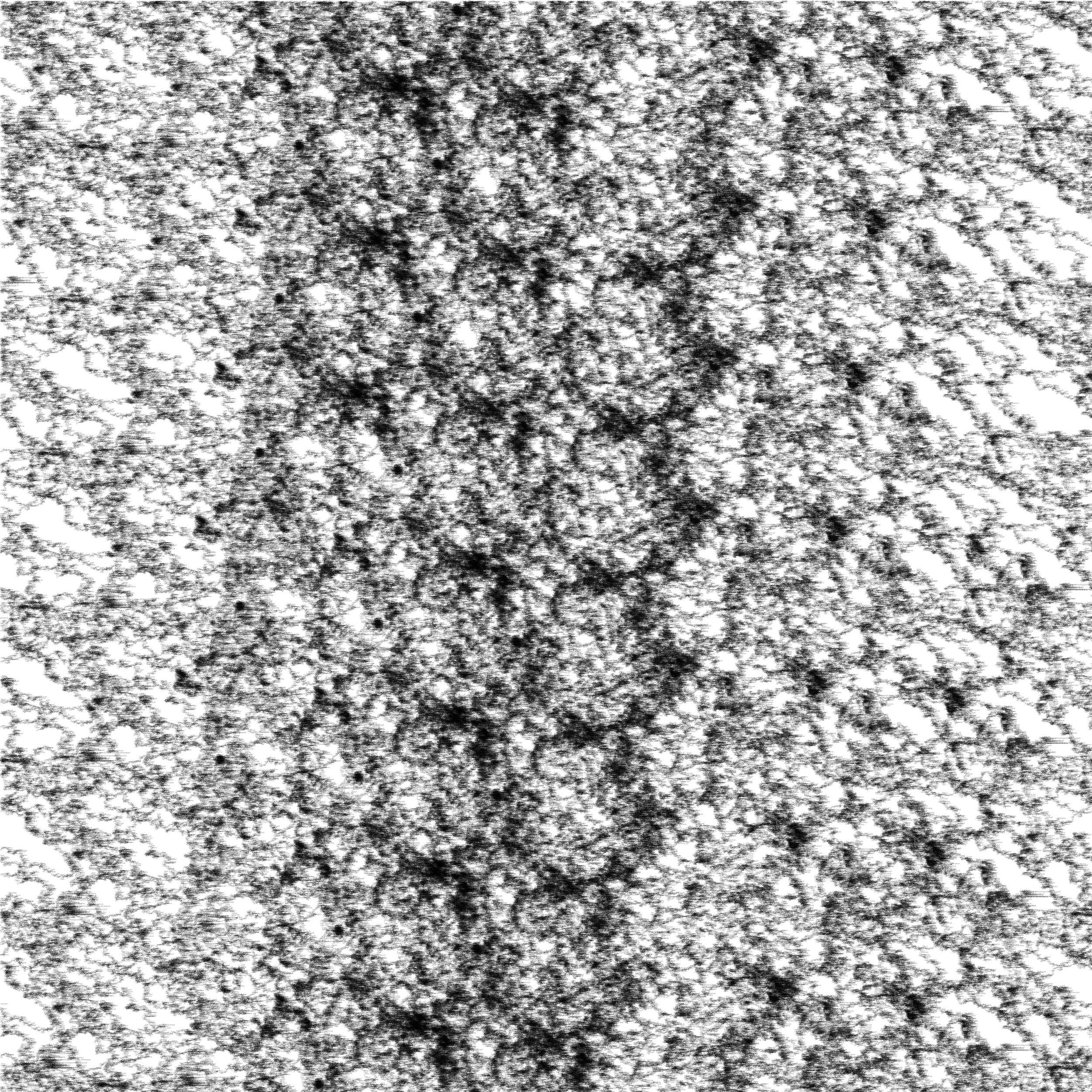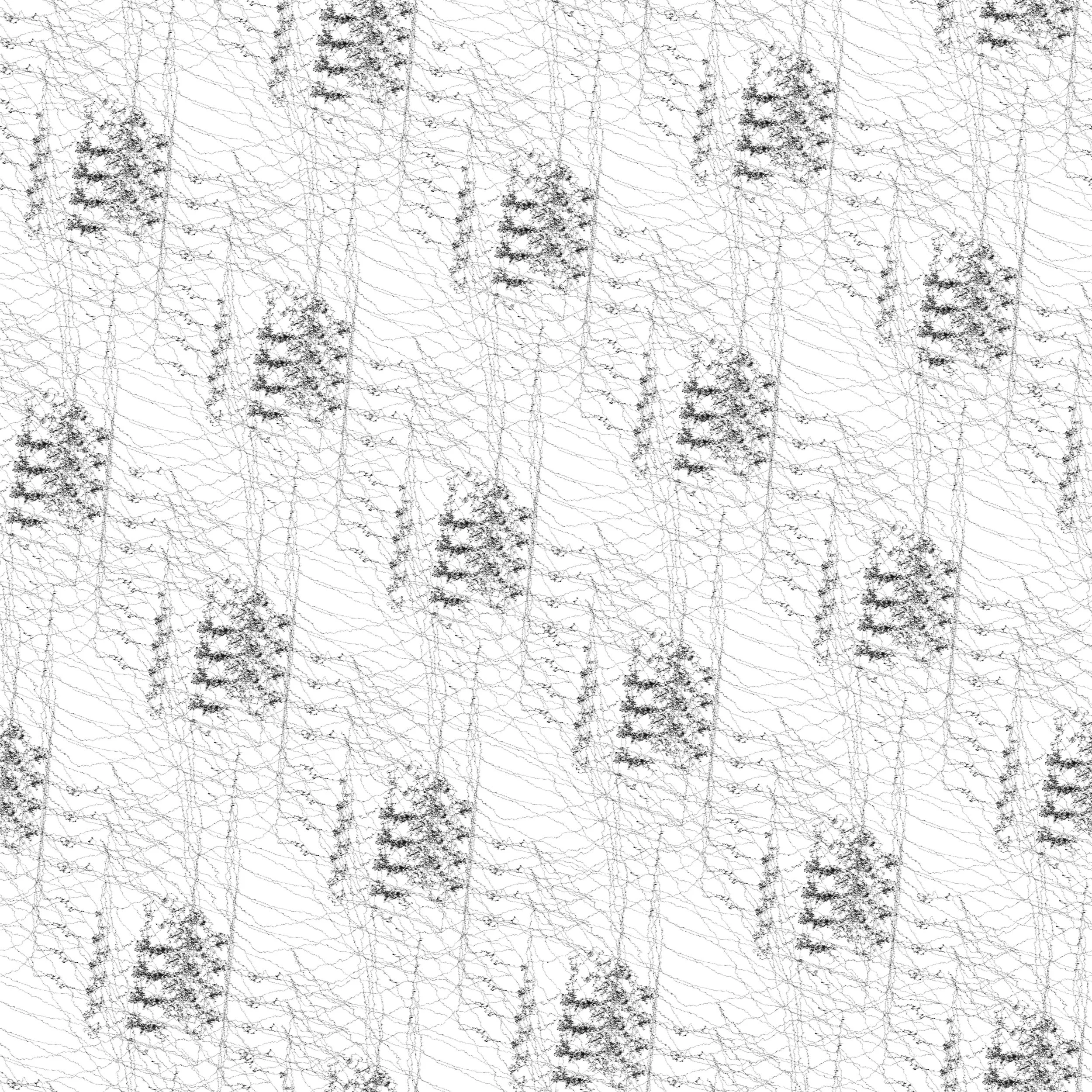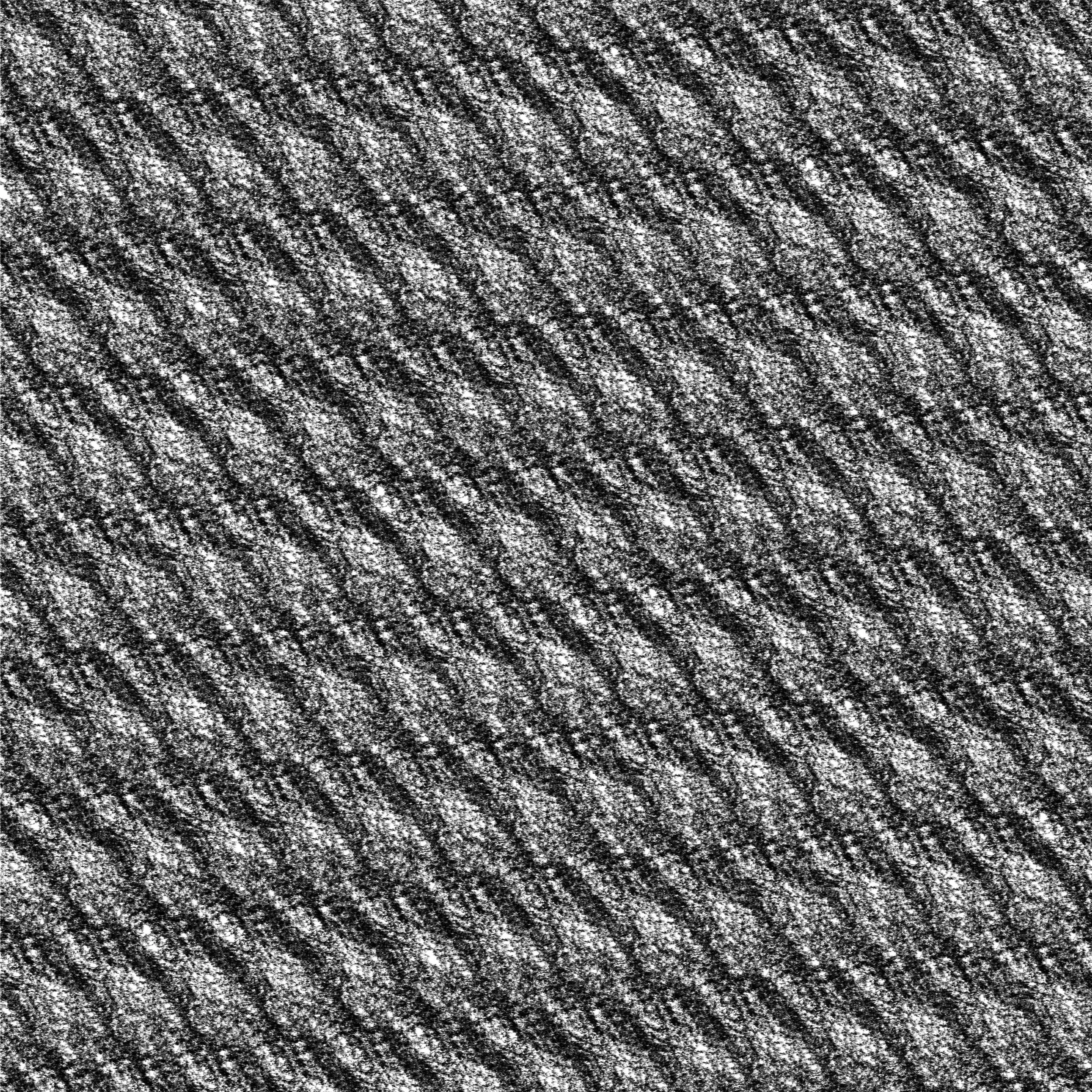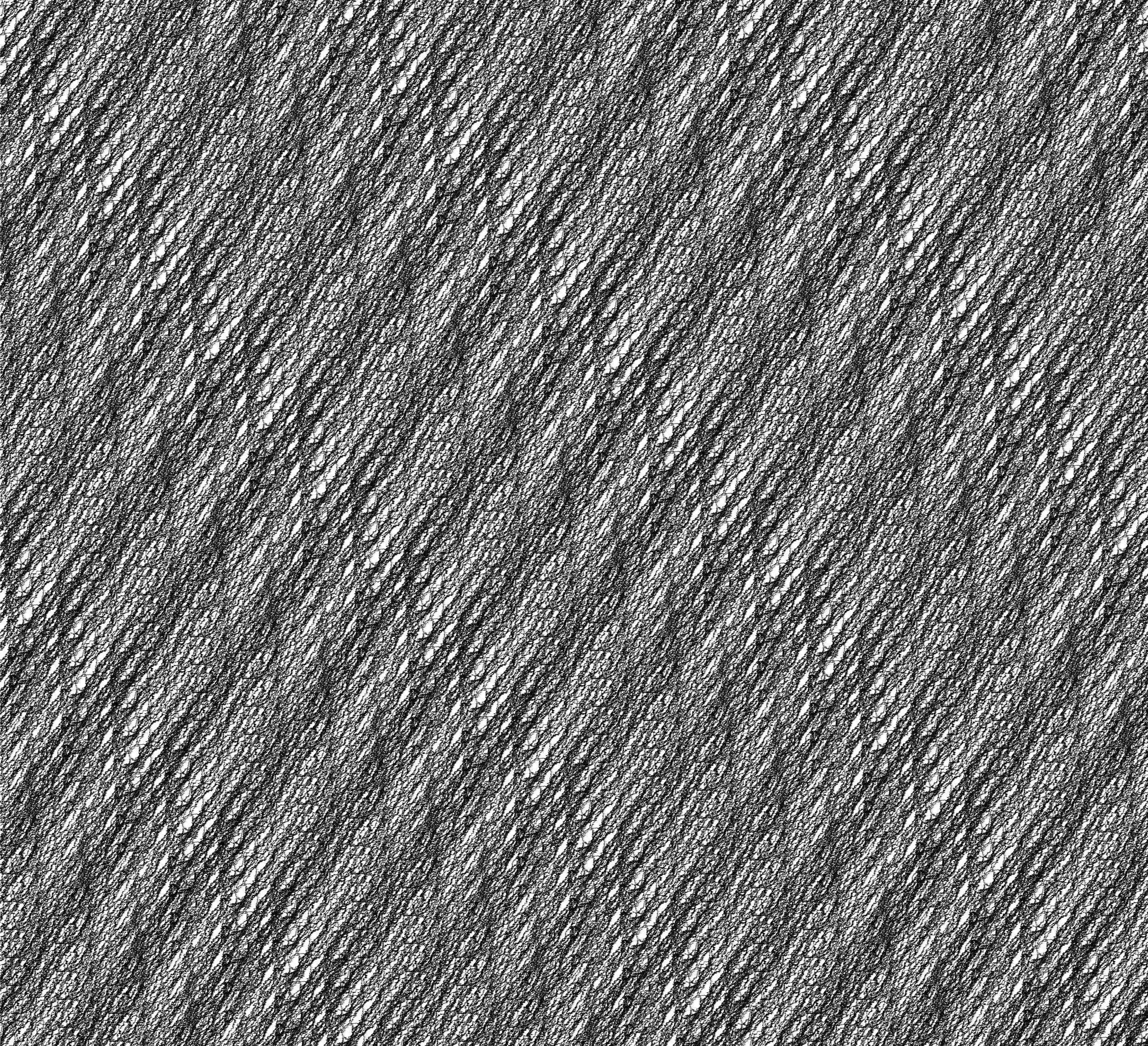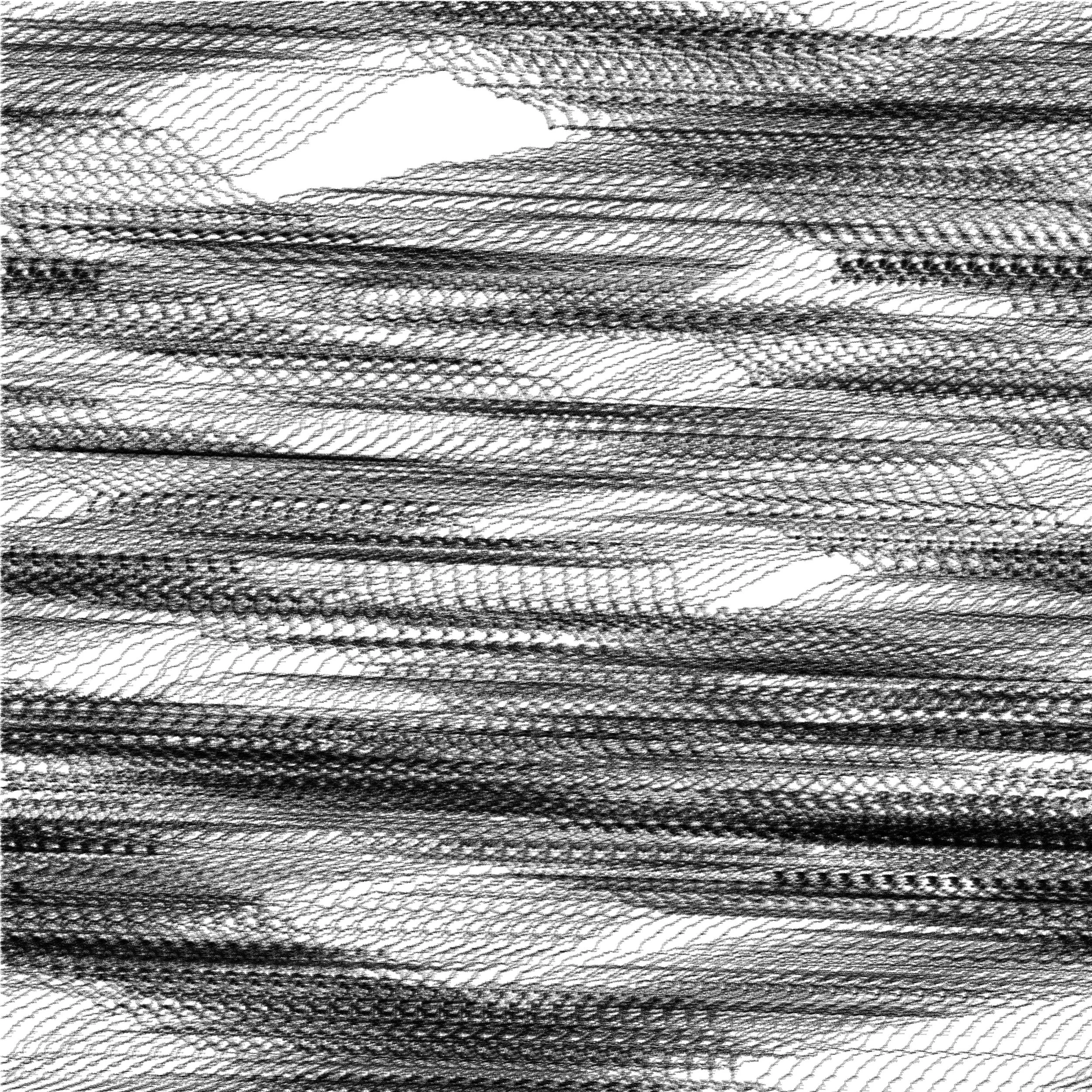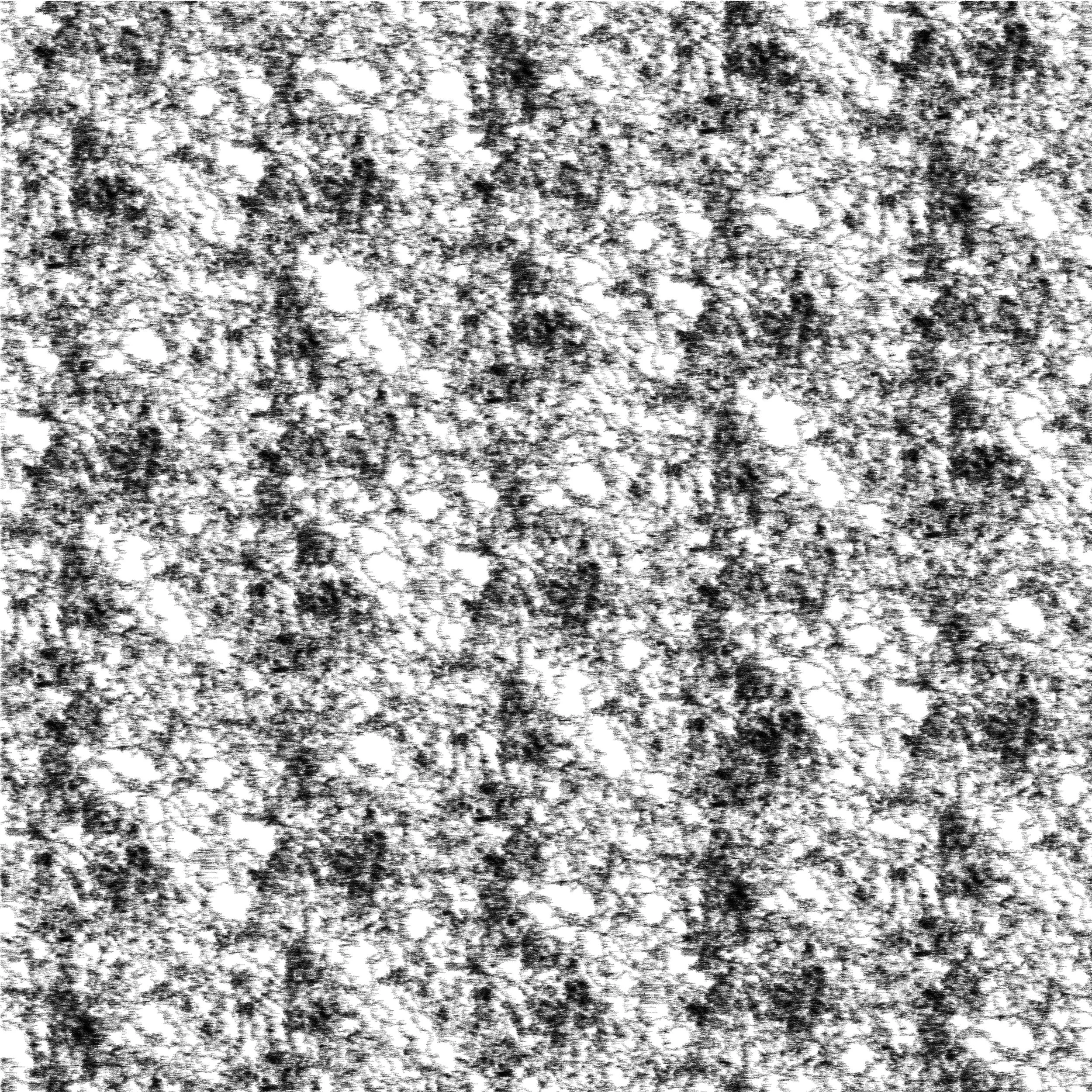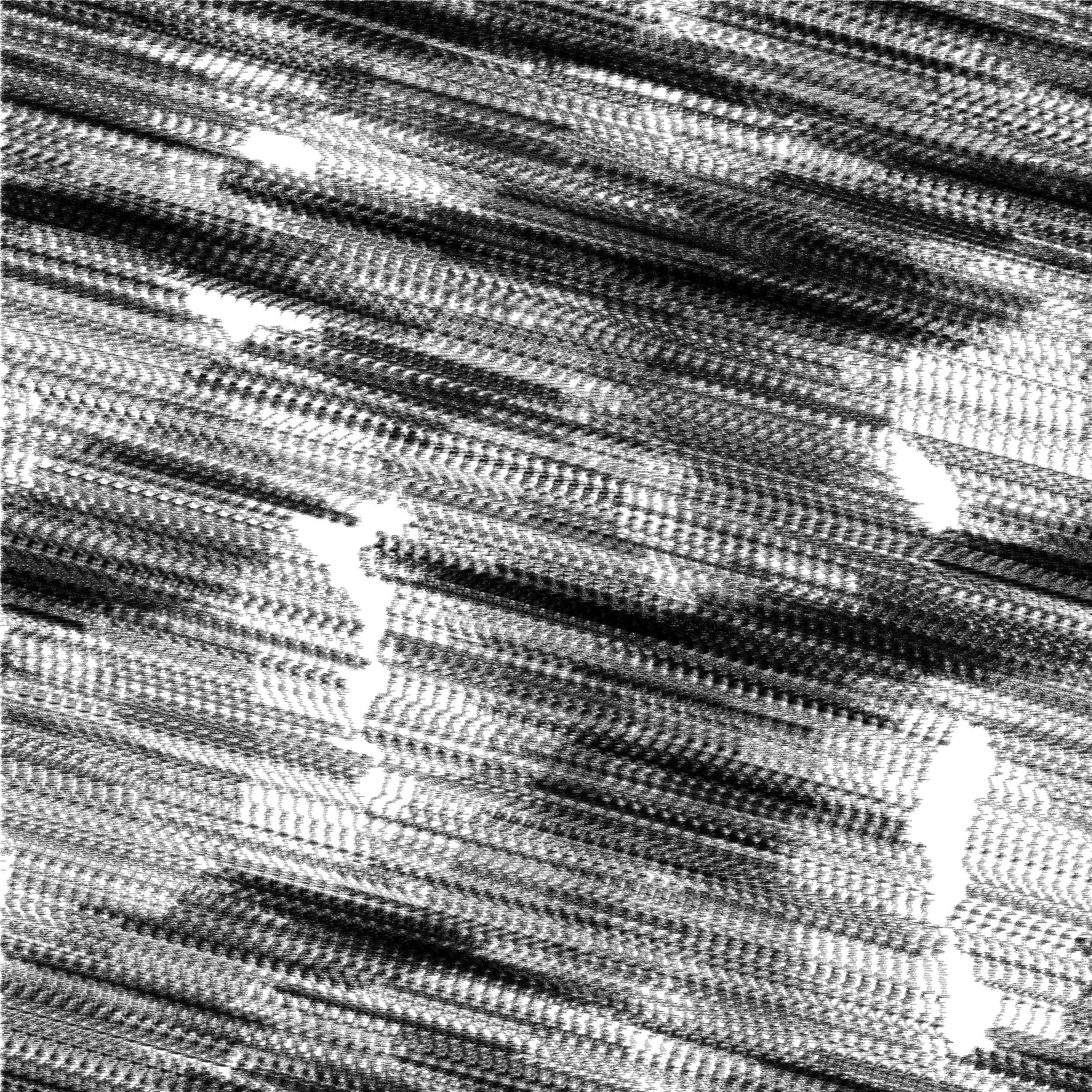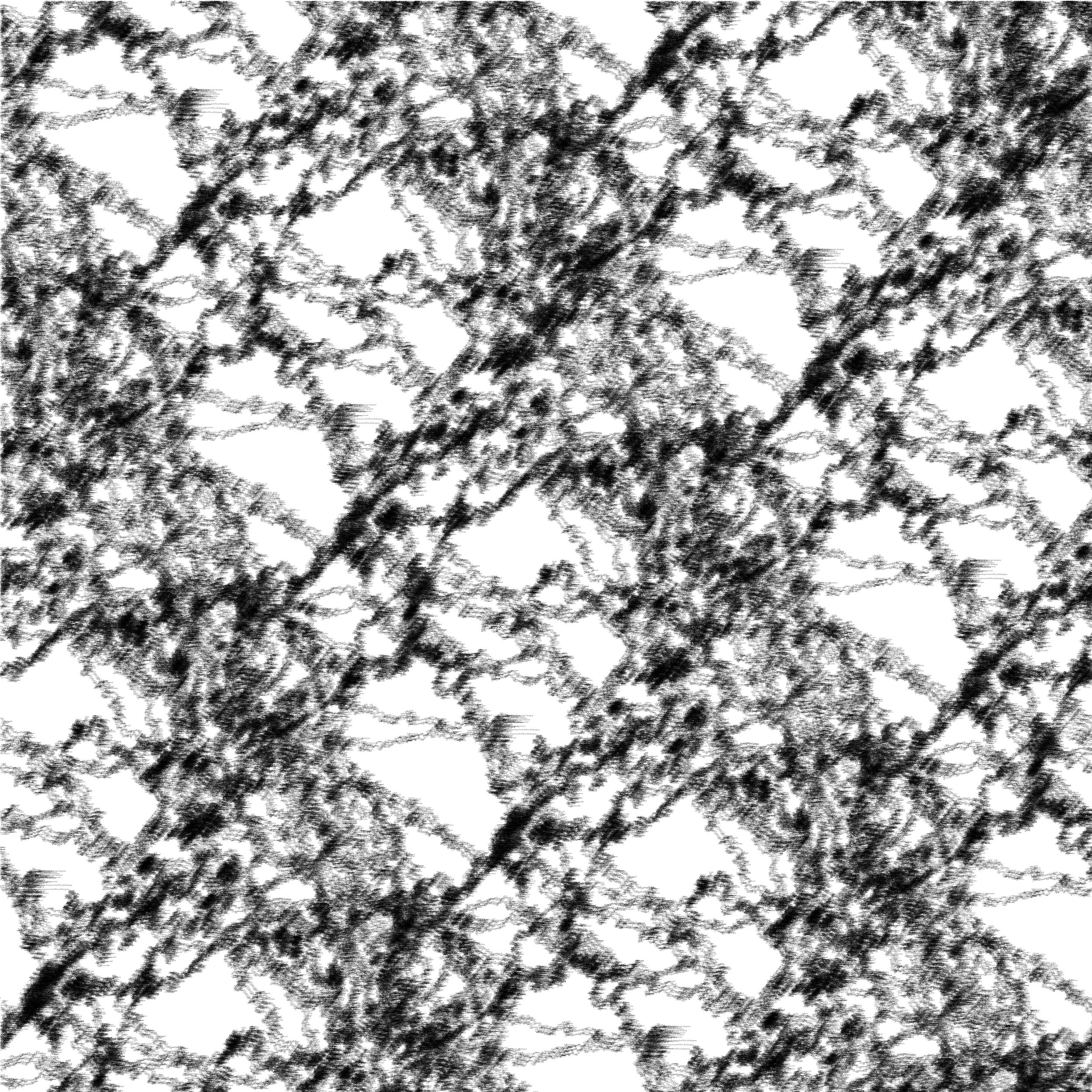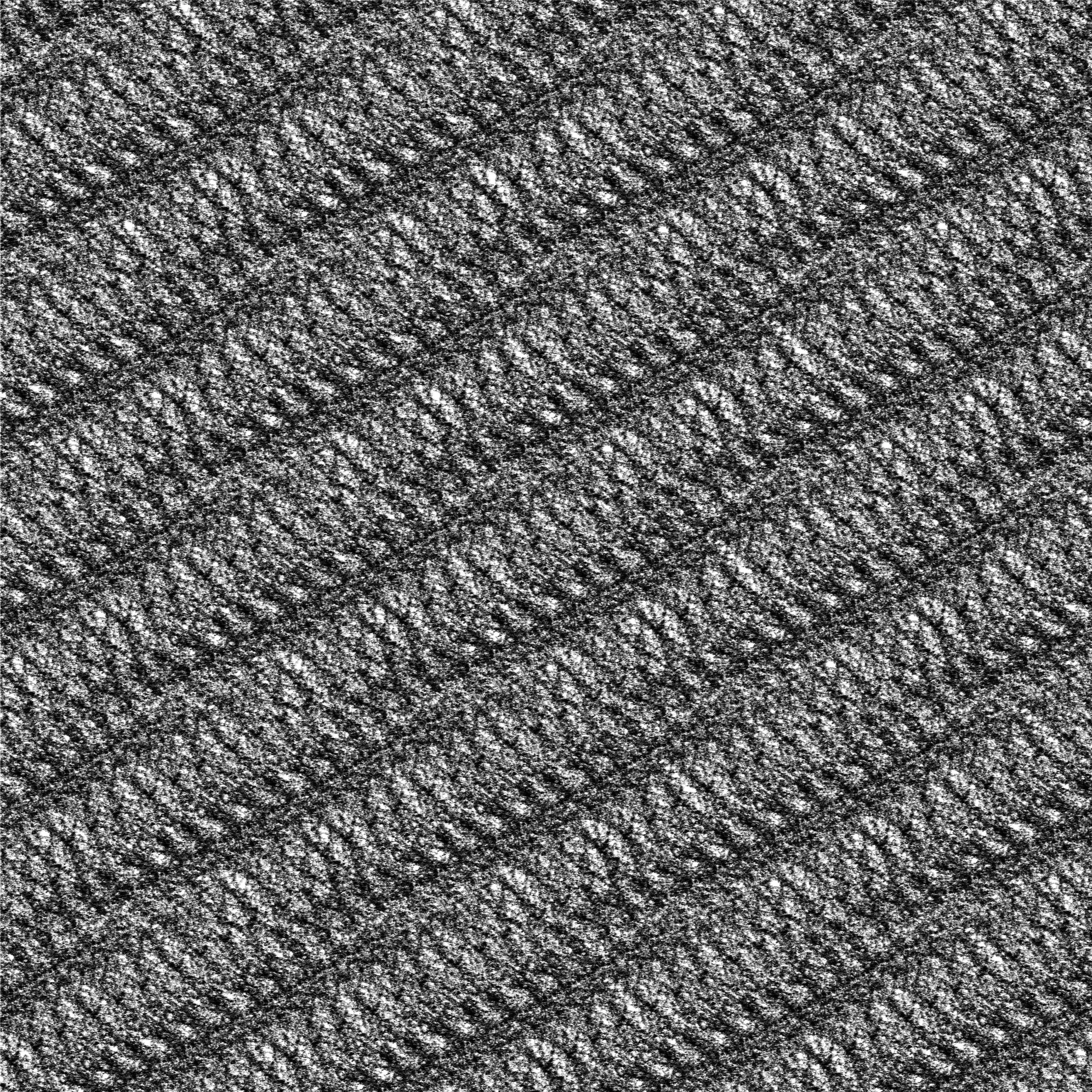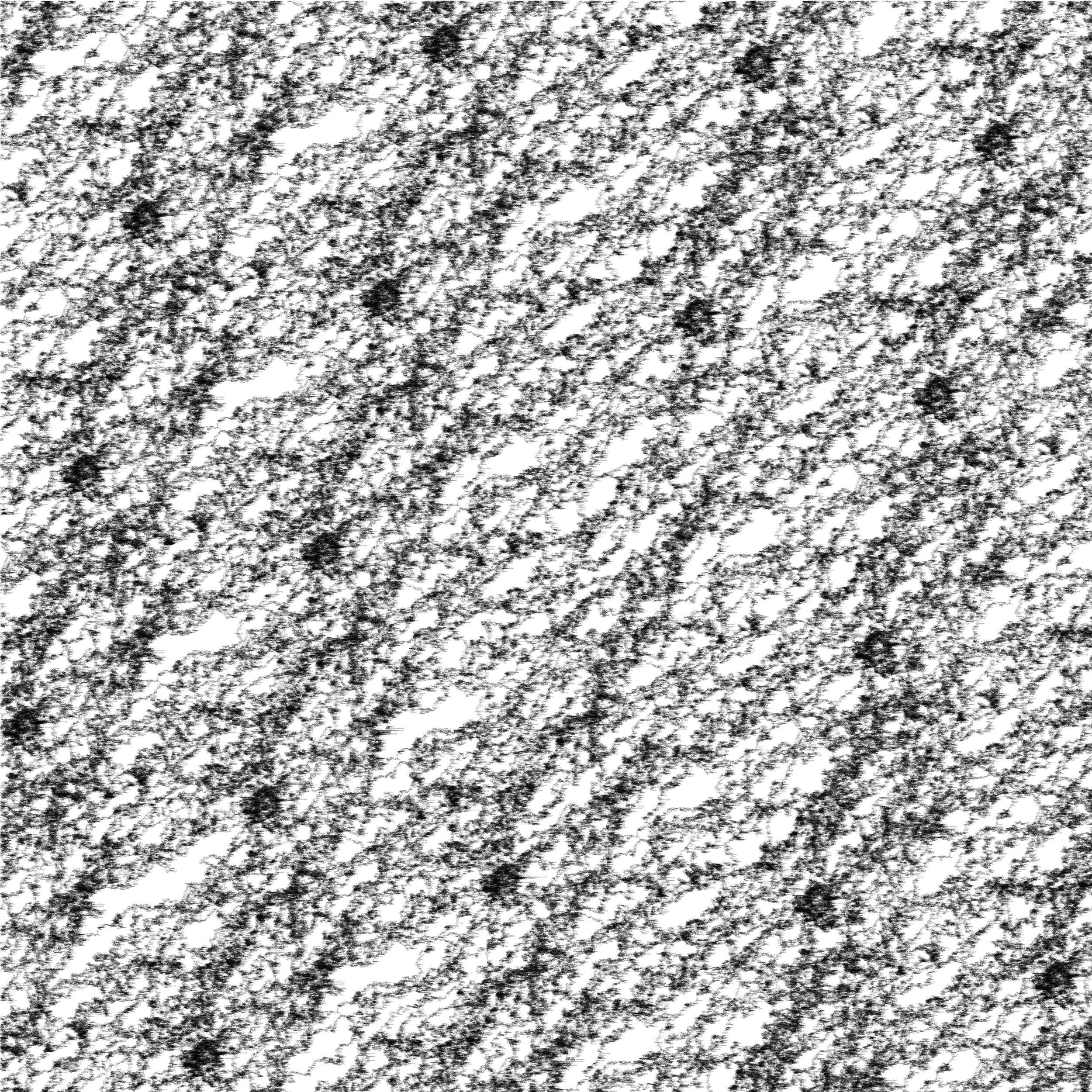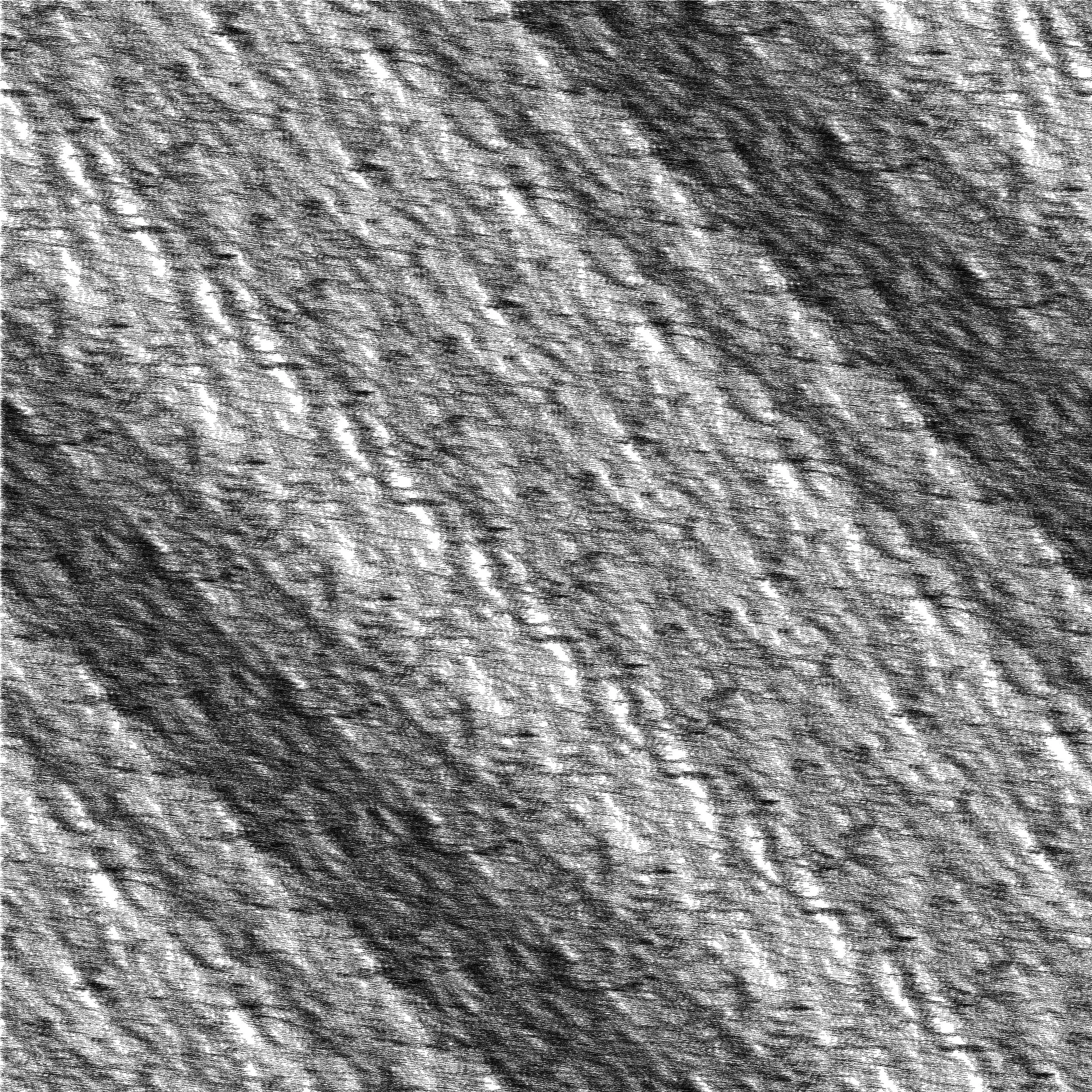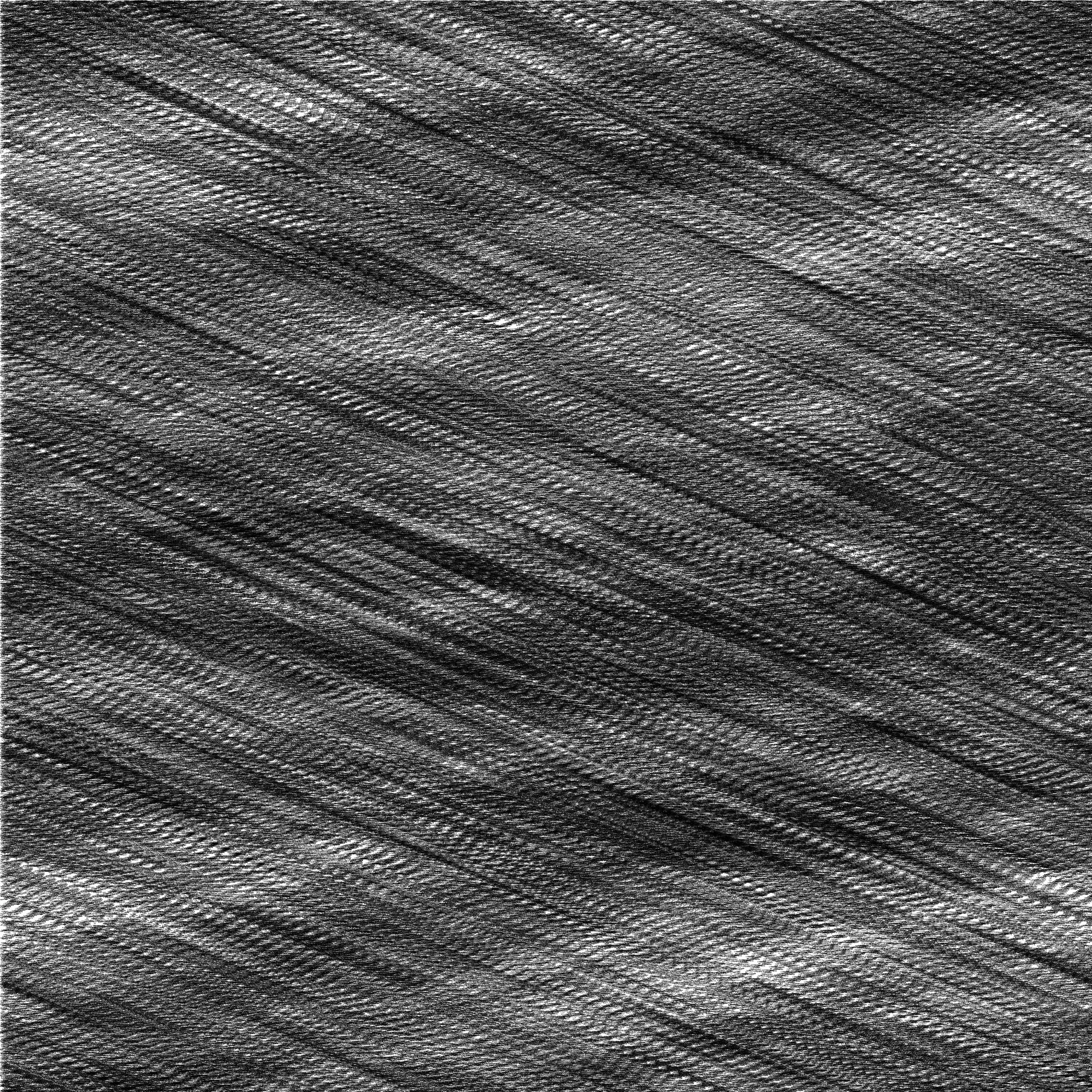Idea 941: The Name of this story
An interview with joey
When I first look at theses pieces, it feels abstract — almost like motion or light streaks. But then, if I keep looking, it starts to feel like there’s a face or figure emerging from the lines. There’s something almost hidden in the layers. Can you explain what I’m actually looking at?
You are actually looking at a story I wrote. It was about 40,000 words which is about 120 pages and the words are very tiny. To create richer patterns, the story repeats over and over so depending on which work you are looking at, there are between 40 thousand and 500 million words.
-
Wait — the pieces are made up of a story you wrote? So, if someone got close enough to the work, they’d actually see text? Whats the story about and whats the significance of showing the text in this format?
Yes you could potentially read the text if printed large enough. I never planned on writing a full-on story, it just kind of happened. It really just started out as brainstorming sessions on a way to present the Typeface: Entrovox in an interesting way. I had huge lists, so many directions. But as I was writing about ideas and experimenting with presenting Entrovox, and was failing miserably, I wondered, what if I wrote down the entire story of my artistic journey from my macro photography work all the way to real time in hopes the story itself could figure out how to actually make something I loved? It was a way for me to procrastinate I think. You’ve got to understand that at the time of deciding to do this, I was directly in the middle of months of the creative process where everything was failing [laughs]. Nothing was working. Just one failed experiment after another. So the story became my way of solving this creative problem from a different angle. It felt unusual, so I knew there had to be something there.
Once the writing of the story sequentially progressed through the history of all my art and all the failures of showcasing Typeface: Entrovox, it came to the point in the story where Joey, myself, decided to write a story because he was failing. When it reached realtime, I truly had no idea where the story was going— if there even was artwork here. It was then where it started to go in interesting directions. Throughout the story, it was actually my inner voices who narrated the story—Joey, Rational, Ego, Doubt, Ingenium (the voice of creativity), Profound, even The Story Itself, and they all pitched ideas, and philosophized about the work itself as it was playing out in real time. The story became this unedited anthology of the creative process of itself, developing in real time. It includes poems, the actual programing code which arranged the words, screenplays, and so many other things. It got really crazy, meta, recursive, like, the text was referencing what was happening in real time.
That’s such a compelling and layered process — I love the intersection of writing, typography, and visual art. It’s like you’ve taken the concept of the “artist’s internal dialogue” and turned it into a literal, visual, and textual piece of art. What were the personas of—Joey, Rational, Ego, Doubt, Ingenium, Profound, and The Story Itself?
As I was brainstorming ideas, I realized that I could accelerate the number of ideas if I took on different roles and just watched them interact and debate over ideas. I’m sure this was Ingenium’s idea. Rational is really the calm one, able to see things without the emotional baggage. They honestly don’t have much emotion, but are really good at parsing signal from noise. Ego wants recognition, feels like they’re a genius, and goes to great lengths to make sure they feel significant and important in the eyes of others. I found Ego was especially helpful when you’re working in private without any feedback from anyone else, as they continued to convince me to keep going and that something special was there. Doubt is constantly questioning everything, mostly wondering if everything in this project was cringy/trite/terrible. They had a lot to say. It was really interesting to see how much Doubt believed that everything I was working on wasn’t going to work, and that the whole project was just a joke. It was Rational that had the most useful conversations with Doubt. But at the same time, Doubt played an important role in deciding the direction since they helped stop me from wasting time on actually impossible things. Ingenium, just wanted to go in new directions and didn’t worry at all if their ideas were even possible. Profound only spoke a few times, but they created the purpose of the art, they were the one who introduced all the other characters to the The Story Itself. This character became a god like figure within the story since everything I was working on was actually creating the personality of this character. They had the opportunity to process their existence and at the same time, create their existence through action of writing and further experiments.
The title Idea 941: The Name of this story strikes me as both ironically literal and deeply conceptual—how did you come up with it, and what does it mean to you? Also, I noticed that each piece is named a specific number, what does that mean?
As the story unfolded, The Story Itself began looking through everything that had previously been written and was inserting their own ideas and for whatever reason, began numbering them. This name was idea #941, which by the way, just so happens to be a prime number, which is meaningless but just lovely coincidence since prime numbers are very unique… but anyways, this idea and name was the placeholder for a potential idea for the title, but it eventually stuck. To me, or rather, to The Story Itself, since recursion was such an important element of the work, this series title just made sense. It’s literally an idea of a name created by The Story Itself, and the name is literally just saying it is the name of the story. Very recursive.
Each work’s name, which is a different number, is actually a calculation of the entropy of that image. In 1948, Claude Shannon created an equation for entropy which can be applied to any form of information. Essentially, the score tells you how unpredictable the information is. High entropy score, high unpredictability, low entropy score, more predictable. I wrote a Python script which calculated this score for each digital image and that become each work’s title name.
I’m curious about the idea of recursion you mentioned. How does that play into both the story? Is there a sense of the characters reacting to their own creation, or even to each other, as the work unfolds? It feels like this could spiral infinitely.
Yeah at some point the recursion had to stop, otherwise it would have been about a story about writing a story about writing a story, forever. But at some point the characters realize the creative process itself was the artwork— instead of separating the creative process and the finished work into separate entities. Profound realized this.
The writing was very experimental, it went in a lot of directions, there was mostly no editing, except there were times that the Story Itself went through the story and added it’s own thoughts/ideas, such as the title name as we previously talked about. I found that the recursive nature of the writing created a level of mindfulness of the creative process itself, which allowed me to be even more creative. I’ve always been a bit obsessed with recursion as it plays an underlying role in consciousness, life, and possibly reality itself—as it acts as one of the key ways through which complexity arrises from simplicity.
Showing the text as art opens such a unique door for interaction. Did you intend for viewers to read the story, or is it more about the tension between what’s visible but not immediately accessible?
While I put great effort, actually many months into just the writing itself, it’s not really meant to be read like a typical story. Typically, when you experience art/books/music or anything made really, you get to see its most polished form, you don’t get to see the failures, or the creative struggle that eventually lead to its success. Or if you do, its something shown as a separate entity versus the final product. More of a behind the scenes thing. But my work represents the complexity, the pain, and the pleasure, of the creative process itself. It’s final form is the creative process itself. And the creative process is the place where I find infinite energy.
I love that failure and success blur into a new category, a new form. Walk me through the nitty gritty of how you got the text to show up this way?
It’s pretty complicated and painfully took my characters forever to figure it out since I just made it all up as I was doing it. I had never heard of this method before. Anyways, so we normally we read left to right, top to bottom, with words sitting neatly on invisible lines, right? So I wanted to challenge this rule with text. I played with many different ways to arrange text and ended up with what I felt was the most unusual and most visually striking way to present text— placing each word according to its Shannon’s Entropy score. The equation we discussed earlier, which again is basically is a measure of how surprising a form of information is. So if something is unpredictable/surprising, entropy is high, if they’re more predictable/less surprising, it’s low. You can calculate any form information with this equation and it is this equation which has basically allowed for the digital era to exist. I’d already played with this concept the the font Typeface : Entrovox, so I wanted to see if I could apply it to my story as well somehow. This was an entire experiment with absolutely no idea if it would work.
So I then wrote a Python script to calculate each word’s entropy score, then placed each word at an angle based on score. So If 90 degrees was chosen to represent the highest possible entropy score for that work, and if a word scored the max entropy level, it would be placed 90 degrees above the previous word—so directly above the previous word. Likewise, if -90 degrees was the lowest score possible chosen, and a word had the lowest entropy, then that word would be placed perpendicularly below the previous word at -90 degrees. Each Entrograph, the name for the black and white images, has it’s own rules for maximum and minimum angles, spacing between words, other details to enrich patterns, and how many times the story repeats. Once I started making thousands of these, I started combining some of my favorite ones with photography I had taken in Photoshop. That was a whole other challenge—layering them to look compelling was really hard. So many failures. Doubt was extremely vocal during that time. I have hundreds of works still in progress. But in the end, only six made the cut. Maybe I’ll show the others in some different way… I have an idea for them.
I made so many Entrographs, many thousands actually. And most were made from the story I wrote, but I did a lot of other experiments with combining books as well. There is one work which was a collection of many books that I like which comprised of about 81 million words. Also there was one which was made from 500 million words from various books, this took extremely long time for my computer to process.
It’s almost like you’re visualizing the chaos of creative thought itself. With so many iterations and experiments, what was the hardest part of it all?
Honestly, the hardest part, but also the most enjoyable part, was getting lost and not knowing where all of this was headed. On one hand this is very exciting, it means it can go in any direction, possibilities are limitless. But on the other hand, I honestly felt some sort of pressure to finish something, maybe it was because I had been showing my work consistently on Instagram for a year and was worried about that, I’m not sure. I wasn’t even sure if all of my energy and effort was going to make anything I was excited about. I eventually realized, and was also inspired by something Rick Rubin said, which was basically, to make the best art, the audience comes last. I think this is true. When you think too much about your audience, you lose focus, you take less risk, you make duller things out of fear of what you think your audience will think, or out of fear of being considered irrelevant from your audience because you haven’t released anything in a while. It was also my Ego who felt uncomfortable to have spent so much time on something without anything to show for it. But none of those anxieties are helpful for creativity or making anything worthwhile. Those thoughts crept up on me and continuing to push through with patience was my only way to resolve it all. My internal characters discussed this topic a lot.
Despite that the freedom really allowed me to go in any direction, it also lead to so many failures. Doubt’s voice got louder and louder after each failure. But this is core of really pushing something creatively— unpredictable failures and eventually, unpredictable successes. When things started to work, even just a little bit, I knew I was doing the right thing.
It was also challenging not knowing when to stop because as I wrote and updated my Entrographs, there was always more to write, always more possible experiments. I left many experiments unfinished. I had to solve the final stages dilemma of— when is the process done for an artwork where the process is the final work? It was an unusual problem to solve, but eventually, in the story, which was dictating the flow of the project itself, the character, The Story Itself, made decision that it was time for the project to be done, at least for now. They understood that it’s purpose and wishes for it’s life had been fulfilled. I remember feeling sad, I probably teared up, like someone was writing their own eulogy, when this character discussed how it was time to move onto new projects. I had become attached to this project, but I agreed it was ready to do the finishing touches to the works.
It’s fascinating how the story itself became an active force in deciding when the work was complete, almost like the art was alive, with its own agency. Now that you’ve stepped away from the process, what does this series mean to you?
Our minds can generate infinite ideas, but deciding what’s good or bad is totally subjective—it’s just based on whatever criteria we believe in. In this series, the characters took all my ideas, even the failed ones, themselves, and made them part of the artwork itself. I think we tend to focus only on the final version of something and forget that the failures were just as crucial as the successes. They’re more or less important, they just serve a different purpose.
Creativity needs failure just as much as success to get anywhere, but society mostly celebrates those who “made it”—celebrities, famous artists, entrepreneurs—while overlooking the unseen voices that also play a role in society and also are saying something important. The thing that floats to the surface does not tell you how important it is, it just tells you it made it to the surface and that it has your attention. Just because something isn’t heard doesn’t mean it lacks meaning. To me, the forgotten ideas in your art and the quiet voices in society are just as important as what gets recognized. After much reflection, Profound realized that this series was a way of giving every idea, akin to giving every person—perceptions of their successes and failures alike—an equal voice, showing that all of it can be meaningful, interesting, and beautiful.
4.99785
4.34751
5.08564
4.40387
4.65410
4.84916
5.09317
THE above works were made
from ENTROGRAPHS
The visual texture actually comes directly from a story I wrote—a story about the creative process of making the artwork itself— the Entrographs. The placement of each word is based on each words entropy score.
The name for each piece is it’s calculated entropy score.
Not sure what any of that means? Great! Read the interview above and deep dive towards the pleasure of finding out.
5.26821
5.89991
4.69934
6.24259
6.03540
5.84725
3.20680
6.29001
6.17993
6.27435
3.37983
3.37125
6.28654
6.32544
6.35084
6.16399
5.62779
6.11545
2.79499
5.52662
5.30323
5.85812
6.23279
4.03437
6.12947
4.75913
5.81665
3.09372
6.26321
5.35334
5.95511
6.17634
6.26680
3.06887_
6.23003
6.25908
5.83265
6.22928
3.01694
6.01653
3.34670
6.47394
5.36058
6.24822
3.61259_
4.35602
6.60153
3.56335
5.40451
6.31619
4.04156
3.40340
6.28556
6.14463
6.29309
5.94661
3.56588
5.82124
6.25870
6.22732
6.21472
5.76964
6.28807
5.26751
5.17205
6.24855
6.50549
6.04638
3.52635
6.05013
6.29517
6.06399
6.06540
6.18973
6.15396
6.09573
5.46547
6.10244
6.02506
6.12516
6.55882
5.35334
6.21371
6.15175
6.23819
6.22708
6.29453
6.01818
6.16359
6.14474
6.16273
6.19920
5.46700
5.08519
5.28193
6.42455
5.89139
6.51550
6.29596
2.51336
6.14110
3.26300
5.49699
6.32549
6.49426
6.19070
6.45184
3.67581
